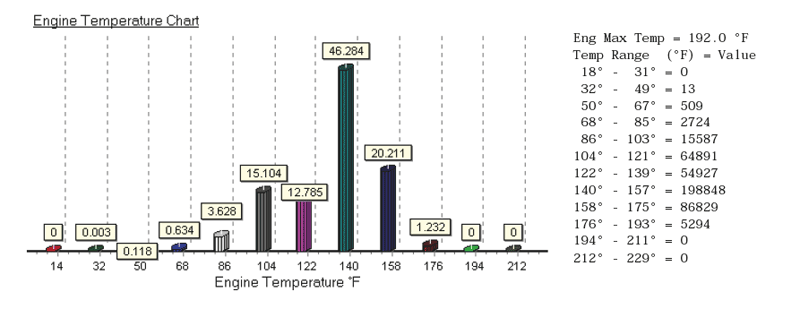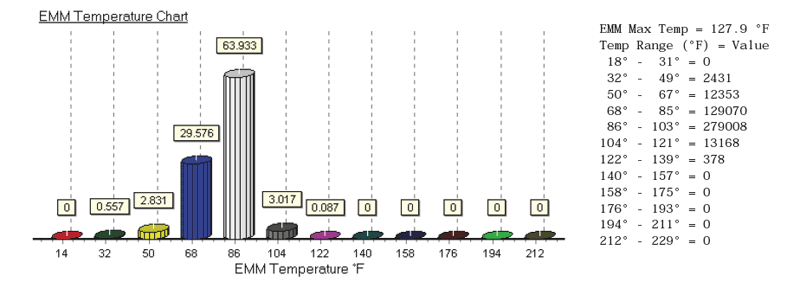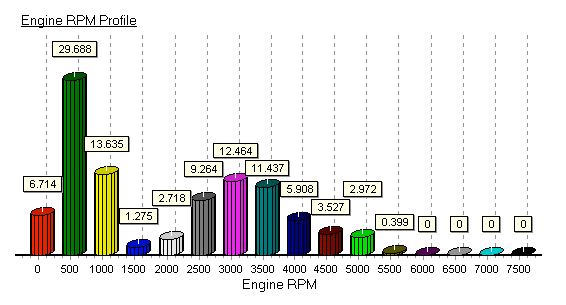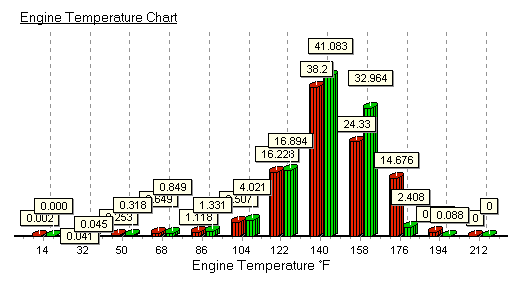Gimme a ticket for an aeroplane
Ain't got time to take a fast train,
Lonely days are gone, I'm commin' home
My baby wrote me a letter!
--The Letter, a rock song which predates the E-TEC
A modern outboard writes an electronic letter to its owner.
Most modern internal combustion engines are now controlled entirely by electronic means under algorithms contained in an Engine Management Module (EMM). As these Engine Management Modules have become more sophisticated, they have begun to collect and store real-time data from the engine. The EMM thus contains a great deal of information about the engine, both current and historical. Unfortunately, until now most of this information has been contained in data structures which were intended to be read only by other electronic devices, and often these other electronic devices were proprietary, expensive, and hard to obtain. With the Bombardier E-TEC there has been something of a revolution. The stored engine data is now much more accessible to an outboard engine's owner. In modern implementations of the EMM like that seen in the Bombardier E-TEC, it is possible to extract this information and convert it into a human-readable form. In the Bombardier E-TEC series of engines, the EMM can be connected to a general purpose computer via a serial cable. Using Bombardier diagnostic software, the information contained in the EMM can be transferred via a serial data link and organized into a very easily read report, presented in the lingua franca of electronic documents, the Portable Document Format (PDF). The engine data is not only presented in human readable form, but converted into excellent graphic displays as well. Here is a sample of this advanced capability of the Bombardier E-TEC outboard engine.
Classic Boston Whaler owner Dave Buckalew re-powered his OUTRAGE 18 with a pair of Bombardier Evinrude E-TEC 90-HP engines. (For an excellent article on the installation, please see the CETACEA section of the website.) After several months of use he returned to his Evinrude dealer, Lockeman's Boat and Hardware of Detroit, for some minor service (related to the replacement of an in-line fuel filter under a manufacturer's voluntary recall). At the conclusion of the service, the engine history report was obtained. The advanced EMM on the E-TEC and the Evinrude Diagnostic Software on the general purpose computer combined to create an Evinrude Engine History Report in a PDF file. You might say, the E-TEC wrote its owner a letter. Let's look at the information contained in the letter.
The Evinrude Engine History Report contains the following information:
The data is quite interesting in itself, but most impressive is the organization and presentation of it in charted form. Below are samples of the chart presentation contained in an E-TEC Engine History Report from one of Dave's 90-HP Evinrude E-TEC engines:
This chart shows in graphic and tabular form the engine RPM history. Values shown on the chart are percentages of total operating time; values shown in the table to the right are actual units of operating time in seconds:

This chart shows the engine block temperature history in graphic and tabular form. Values shown on the chart are percentages of total operating time; values shown in the table to the right are actual units of operating time in seconds:

This chart shows the engine management module temperature history in graphic and tabular form. Values shown on the chart are percentages of total operating time; values shown in the table to the right are actual units of operating time in seconds:

The diagnostic software on the general purpose computer can store all of the report information as a two-page PDF document. In this form the data can be easily read by humans and transferred from computer to computer. Once the data is saved as a PDF file, it can be easily sent via email. A sample of a PDF file created by the Bombardier engine and its diagnostic software is available for viewing.
It may be interesting to have a peak at another engine history report, this time one written by an E-TEC 225-HP engine used on a bass boat by a very active competitive fisherman. This report shows several additional entries, including separate logging and reporting of the individual cylinder head temperatures, more hours of use, a significantly greater number of start cycles, and a few stored or persistent fault codes. Let's look at a few of these more closely.

This engine has a history of more high-speed operation. Idle time is down to only 30-percent of total time, and about 36-percent of the total time is spent at 3,000-RPM or higher.

This bass boat engine has been run harder than Dave's so the history of the cylinder heads shows a higher range of temperatures. There is again good correlation between the operating time at idle speeds and the engine time in the 140-degree range. If the engine cooling system thermostat is working properly, the engine will warm up to and maintain 140-degrees or more at idle. If the temperature history shows more time at cooler temperatures, this may be an indication that the cooling system thermostats and poppet valves are not working properly, and the engine is running too cold at idle.
This engine reports 1,863 start cycles in only 192 hours of use, which implies about nine to ten engine starts per hour of use. This might seem excessive, however the owner is a professional fisherman. He probably moves his boat from place to place frequently, looking for fish. If we compare with the data from Dave Buckalew's engine, we see Dave only averages a little over one engine start per hour of use. This seems like a more typical value.
This engine has a few stored or persistent fault codes. These are errors or alarms the engine noticed during operation and retained in its memory.
Code Times First Last History Description 38 1 0:00 0:11 Oil pressure pulses in distribution manifold not detected 43 22 5:54 135:46 Engine temperature above expected range - Port or single 28 2 31:11 38:41 Shift assist circuit malfunction 69 2 50:03 82:33 Engine temperature above expected range - Starboard
Code 38 means there was a pulse of oil from the oil pump but a resultant flow of oil in the manifold was not detected. This occurred early in the engine's history and was probably part of the initial engine start-up while the oil system was being bled of any air. Code 43, engine above expected temperature, was noted 22 times over a fairly wide span of operation. This may be a sign of possible engine cooling system problems in the port cylinder head. (Or perhaps an artifact of a software glitch--see the follow up discussion.) Code 28 occured twice, indicating there perhaps was a shift without the shift assist switch functioning. And Code 69, starboard cylinder head above temperature range, occurred only twice.
To be clear, access to this information is only via the Bombardier diagnostic software. Initially Bombardier developed the software in two versions, one for the Windows operating system and one for Personal Digital Assistant (PDA) devices. Future development of the software appears to be planned only for the Windows operating system. The current version of the software is part number 763724. This software is not a standard retail item and there is no published retail price for it. It is considered a dealer specialty tool. Some dealers are offering it for sale for approximately $350. The availability varies from dealer to dealer. The software runs under the Windows operating system, which is not included. You also need a serial data cable to connect to the EMM. And, of course, you need a computer (with a serial port) on which to install and run the software. In order to minimize the risk of any 120-volt AC power leakage causing damage to the EMM or other components, only a laptop on battery power should be connected to the engine.
The diagnostic software has a lock which prevents use of it to make modifications to the engine operating parameters unless the software has been properly registered with Bombardier. This option is only available to dealers and their certified mechanics. However, the unregistered version does permit observation and recording of many engine parameters in real time, which can be of value in engine diagnosis and repair. The unregistered software also can create and store data in PDF reports as shown above. No future updates are available to the unregistered software versions, which may be a drawback to buying it for personal use.
Or, if lacking all of that, you just need a cooperative dealer to email you a report when they are servicing your E-TEC!
Comments or questions related to this article can be posted to a thread in the website's discussion area which has been created for that purpose.
Many thanks to David Zammitt of Lockeman's Boat and Hardware in Detroit and Dave Buckalew for providing the information presented here.
DISCLAIMER: This information is believed to be accurate but there is no guarantee. We do our best!
The page has been accessed times.
Copyright © 2007 by James W. Hebert. Unauthorized reproduction prohibited! Copying and use of this text and graphic images in any form is prohibited without prior permission. Do not cut and paste this text or these images into other on-line documents.
This is a verified HTML 4.0 document served to you from continuousWave
URI: http://continuouswave.com
Last modified:
Author: James W. Hebert
This article first appeared January 2007.